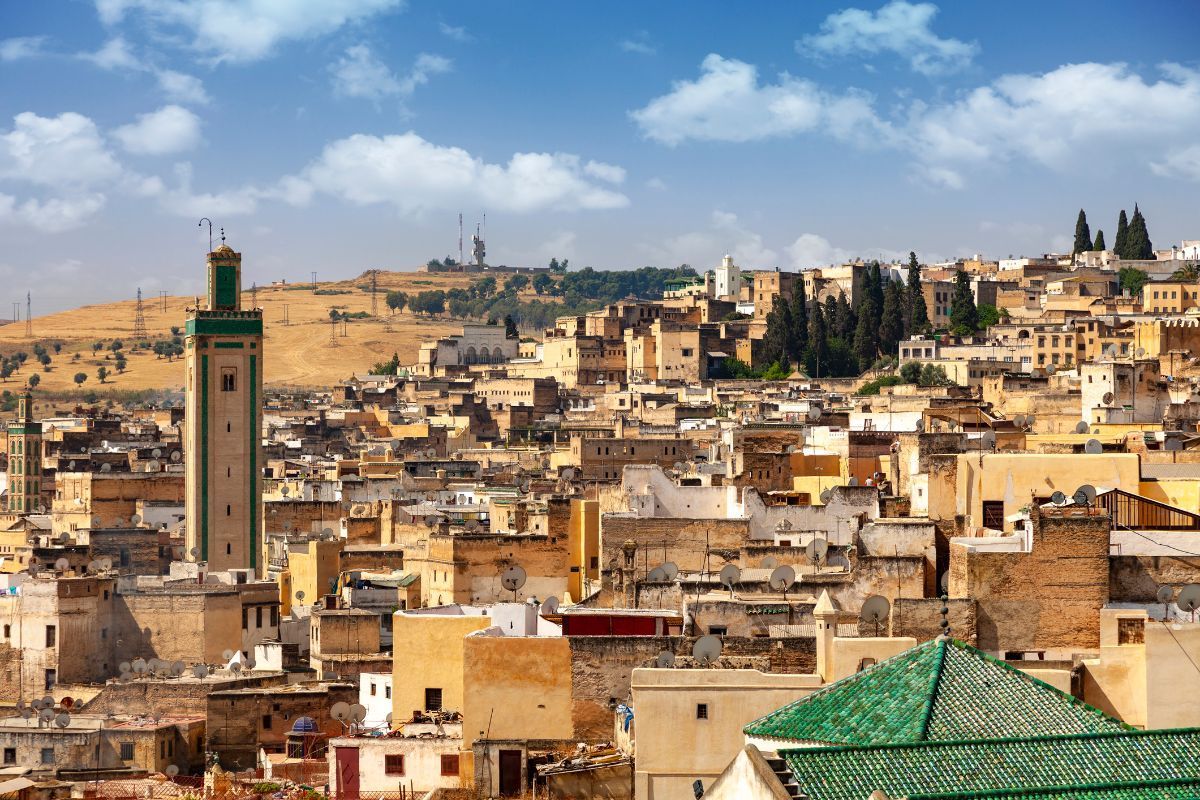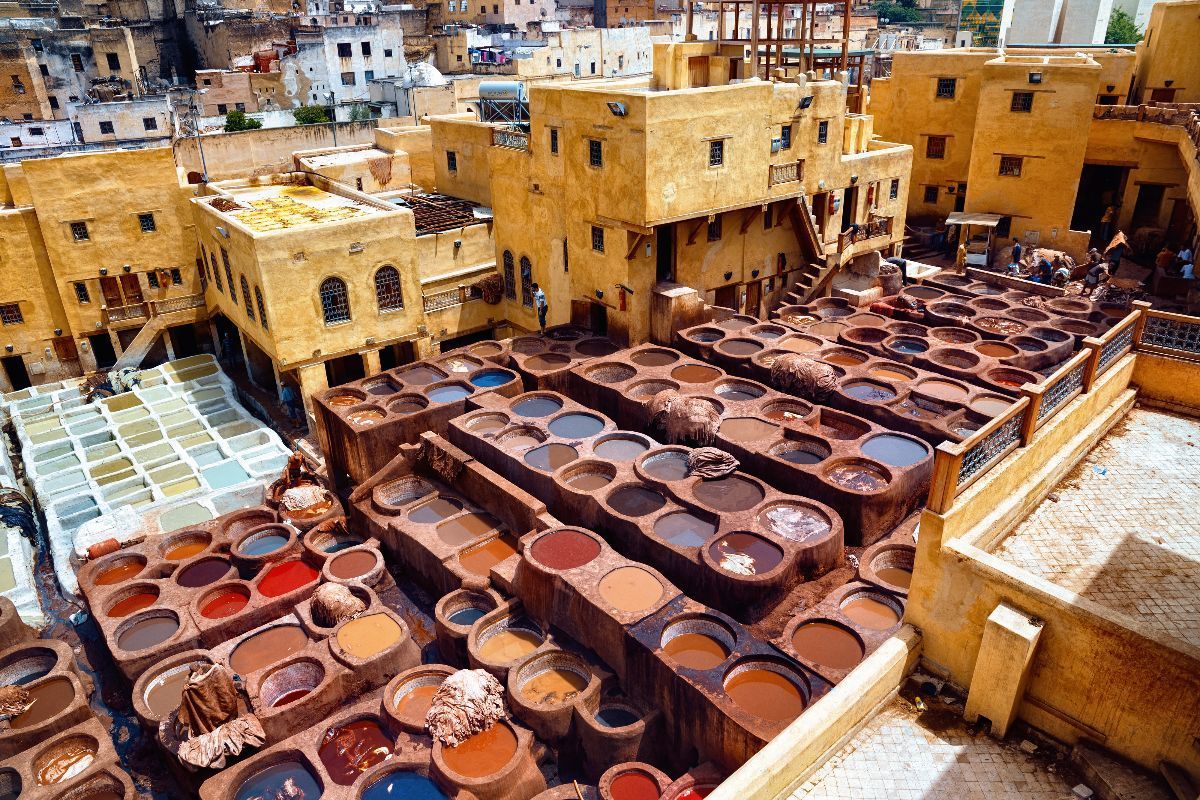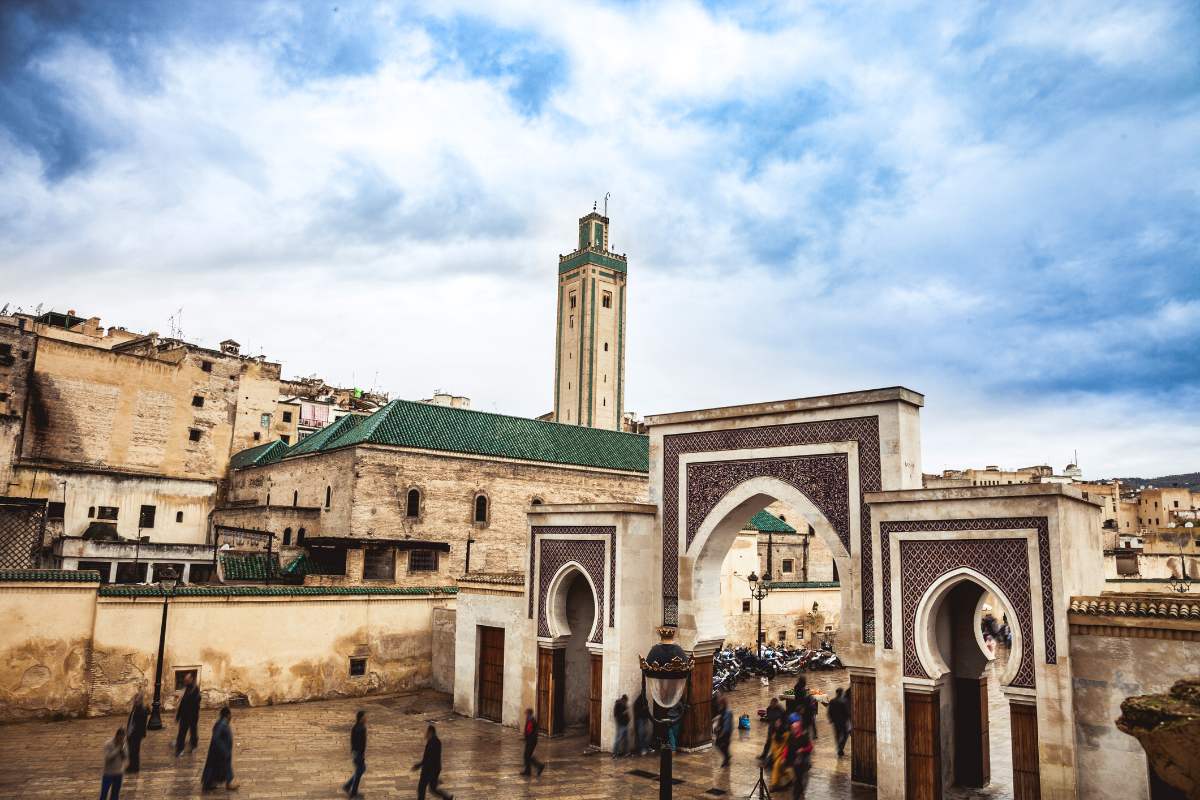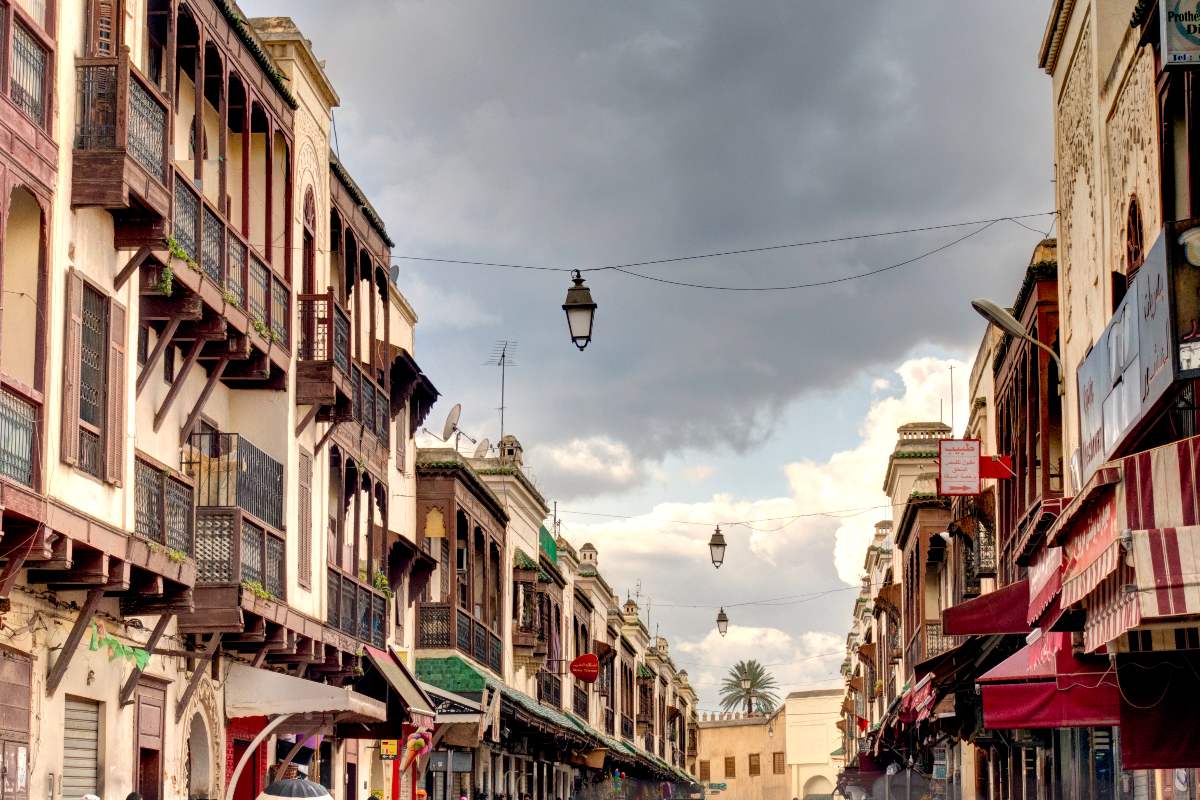Fez is largely considered the spiritual and cultural capital of Morocco, thanks to its rich past. This gives it an advantage from a tourist perspective: there are many places of interest and beautifully constructed buildings, which we list on this page for your reference. Additionally, we explain its location, history, and the most interesting proposals for a premium traveler. All this, with the wisdom that comes from experience: we are an agency specialized in this destination and in organizing exclusive trips for our clients.
Fez is located in the heart of Morocco, not far from the main tourist destinations in the north, but very close to Rabat and Casablanca, the two main cities on the Atlantic Coast. It has well over a million inhabitants, and its region is Fez-Meknes, of which it is the capital. It is known for its fertile land, extensively used for a variety of crops: from argan to capers, through different cereals and fruit trees.
Many arrive in Fez by road, as part of a broader circuit through the north of the country or on longer journeys. Its bus station is modest and mainly used by locals, while private transport is more common among tourists. Fez enjoys
good communications with other areas of Morocco, as it is served by the A2 highway (an east-west axis from Uchda to Rabat) and the N8 national road (a north-south axis from Al Hoceima to Marrakech).
Here’s a list of distances from Fez to major tourist destinations in Morocco, which is useful to know if you’re planning a circuit around the country:
Regarding mass transportation, Fez is connected directly or indirectly by train to other cities in Morocco (Meknes, Rabat, Casablanca, Tangier, Marrakech), but it does not yet have a high-speed line, which is expected in the coming years.
However, it does have its own international airport: Fez-Saïss, with about 1.5 million passengers a year. Therefore, it does not have as much air traffic as other airports in the country, such as Casablanca or Marrakech, but it is an interesting gateway for travelers from countries like Spain, France, Italy, or Germany, among others, as its use is mainly touristic.

Along with Marrakech, Rabat, and Meknes, Fez is part of the Imperial Cities of Morocco, as it was the capital of the kingdom at some points in its history. However, Fez has been a thriving city, at least culturally and religiously, at all times of its existence. The result of this is a varied and extensive historic center, which pleasantly surprises all who dare to discover it.
The history of Fez began in the year 791, when Mulay Idris ibn Abdallah established his capital here. This monarch, of the Idrisid dynasty, was a descendant of Muhammad and is known as Idris I, revered as a founder and great religious figure. His son, Idris II, consolidated his decision, extending the city along the Fez River.
The city soon was nourished by two large groups of Muslim exiles: those who arrived from the Umayyad Emirate of Cordoba (Al-
Andalus) and those from the Aghlabid Kairouan (present-day Tunisia). This led to the creation of the city’s first two neighborhoods, each with its reference mosque: the Mosque of the Andalusians and the Karaouine, as well as markets and their own fortifications. In addition, hammams, fondouks or inns, and other premises that denote its early dynamism emerged.
With the Almoravid dynasty, which dominated the territory of present-day Morocco, the capital of the new political entity moved to Marrakech, but these rulers (and their successors, the Almohads) always kept this city in mind, improving its defensive infrastructure and mosques.
Around 1250, the Marinids (or Benimerines), originally from the east of the Maghreb, conquered Fez and made it the capital of their sultanate, expanding the city. Thus arose what is known today as Fez el-Jedid or ‘new city’, in contrast to Fez el-Bali or ‘old city’. In this new city, a large royal residence, markets, and, in the following century, the Mellah or Jewish quarter were created.
In fact, the 14th century is considered the period of greatest splendor for the city, especially with the Marinid sultans Abu er-Rabi and Abu Said Othman. Houses and palaces were sumptuously decorated, madrasas (or medersas) were built, commercial ties with the West and Al-Andalus were strengthened, and the University of Karaouine was expanded…
The 15th century, however, was more tumultuous, with civil unrest, leading to dynastic changes in the 16th century: first the Wattasids and then the Saadians, who moved the capital to Marrakech, more stable socially and politically.
But the capital returned to Fez later: it was with the Alaouite dynasty in the 18th century, which led to a new process of transformation in terms of infrastructure and civil and religious buildings, which continued even in the 19th century. In this regard, it is worth mentioning Mulay Ismail (an Alaouite monarch who ruled from nearby Meknes) and, above all, his successor Mulay Abdallah.
However, 1912 is a bittersweet date for Fez: here the establishment of the French Protectorate was agreed upon, which, despite this, led to the transfer of administrations to Rabat, becoming the capital of this new political entity, something that was maintained after the independence of the Kingdom of Morocco in 1956.
Since then, Fez has tried to find its place, both politically and economically, given that its religious and cultural role remains as a benchmark in the country. In this sense, the rise of the textile sector a few decades ago and, currently, the growth of international tourism can be cited.

There are plenty of reasons to visit Fez, whether on a quick getaway of several days or as part of a wider circuit around the country. If you need to know some of them to convince yourself of your choice, here are some compelling arguments:
Like other cities in Morocco, in Fez, you can talk about the old city and the modern city. However, the old city can be divided into two areas: Fez el-Bali (the founding nucleus of the city) and Fez el-Jedid (which was the ‘new city
in the 13th century, although today it is considered an old and historic neighborhood). All of them have a special character and are well worth a visit to discover their essence and points of interest. The modern city, on the other hand, has a commercial character and does not stand out for the monumentality of other neighborhoods called ‘Ville Nouvelle’, so it does not have great monuments to add to the travel list.

Fez boasts the largest historic medina in Morocco, and one of the largest in the entire Arab world. And its name is Fez el-Bali. One of the advantages for travelers is that it is very well preserved, with many of its monuments still standing, as well as its walls and access gates. Here is a list of places of interest within the historic medina:

The cultural prestige explains why this is one of the cities with the widest variety of museums in the country. In many cases, they focus on traditional crafts, given the skill and exquisiteness always demonstrated by its masters. But in other cases, they are exhibition centers related to episodes of its history and society. Here is a list of the most important ones, which are distributed in different areas of the city:
Fez, while not as famous as other Moroccan cities for exclusivity, offers interesting proposals for select travelers. There are more premium service providers in accommodation, dining, wellness, and leisure. For inspiration, consider the following:
Most Luxurious Hotels in Fez:
Most Luxurious Restaurants:
Other Luxury Experiences:
Chic Morocco, a premium travel agency, can assist with tailor-made trips, offering high-quality services in Fez and other Moroccan destinations.








Fill out the form below to receive a free, no-obligation, tailor-made quote from an agency specialized in Morocco.
Travel agency and DMC specialized in private and tailor-made trips to Morocco.
Mandala Tours, S.L, NIF: B51037471
License: C.I.AN-187782-3